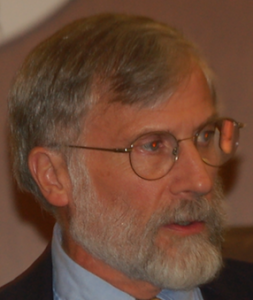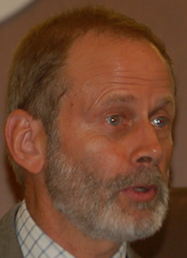Officials discuss land use taxation
Published 3:58 pm Thursday, October 5, 2017
Presentations from three organizations focusing on land use taxation in Buckingham led to a discussion during a joint meeting between county supervisors and planners where discussions centered on potential drawbacks and benefits to implementing the program.
Representatives from Virginia Tech, the Virginia Department of Forestry and the Virginia Department of Taxation spoke during the Sept. 18 meeting, providing information about the commonwealth’s use-value assessment program, which values and taxes land for the potential use it has rather than being valued and taxed only based on its fair market value.
The discussion of land use taxation brought controversy when it was first considered in 2007, where implementation of the program was defeated on a split vote by county supervisors.
Trending
The resurgence of the topic came in June when Ivan “Chip” Davis, president of the Buckingham Farm Bureau, approached the planning commission regarding county leaders learning more about the concept, which allows a locality to assess real estate based on the use value instead of fair market value.
Categories for land use include agriculture, horticulture, forestry and open space, according to county records.
Gordon Groover, with Virginia Tech, said the purpose of the presentations were to inform the county about the program. Lex Bruce, his colleague, was present during the meeting.
Groover said during his presentation that only the land associated with the property, not the homes or other buildings on the property, would be considered eligible for the land use program. The related buildings would be assessed at fair market value.
“It’s the raw land that qualifies,” Groover said. “Not the buildings, not the structure, not the (agriculture) buildings, not the farms … Only the land that is in the program gets the tax break or the assessed value reduction.”
Agriculture and horticulture property considered for the program would need to have a minimum of five acres, while forest properties would need a minimum of 20 acres and open space properties require five acres.
Trending
Regarding the value assessment, the amount for taxation and implementation would be determined by the county’s commissioner of the revenue, who Groover said has the final authority on the matter.
In order to qualify, Groover said owners of the property must apply to participate.
To determine the proposed value of land, Groover said an income and rental rate approach are used.
The income approach determines value of agriculture and horticulture land by taking the number of crops grown in a particular county and dividing it by the number of farms in a county. If the model solution is more than one acre, Groover said that determines the crops grown on county land is profitable.
The rental rate approach uses an existing method used to determine capitalization rates, dividing the rental rate with the capitalization rate of the county. The capitalization rate includes adding the 10-year average long term rate with the 10-year average property tax.
Groover suggested if the county enrolls in the land use taxation program additional staff should be added who could assist the commissioner of the revenue in administering the program and providing additional management for the county’s timber allocation.
Dean Cumbia with the Virginia Department of Forestry detailed the availability and resources timber in the county offers, noting that approximately Buckingham County is covered by 86 percent of forest, or more than 300,000 acres, with the majority of the forests owned by private entities.
Cumbia said the harvest activity in Buckingham is the second largest in the state, with 150 different harvesting sites in the county encompassing nearly 10,000 acres.
Cumbia said eligible property would include at least 20 acres of forest land with 40 percent of that property containing normal stocking trees that are well-distributed.
Total economic output for forest-related industries was estimated to be $64 million in the county, according to 2015 numbers from a cited study by the University of Virginia published in May.
“It’s based on the potential of the site to produce. It’s not based on what’s there now or what could be there in the future,” Cumbia said.
He said the areas’ state forester would determine the use value of the forest land and report it to the State Land Evaluation and Advisory Council (SLEAC), which publishes county and city land use value across Virginia.
Nick Morris, a property tax manager with the state, provided information about the statutes related to the use-value assessment program.
“It’s a mouthful,” Morris said after reading aloud a few passages. “But I think it does a good job of stating what the policy, the program is about.”
He said provisions are in place to implement rollback taxes — which would remove the owner of the property from receiving tax benefits — for properties that were enrolled but don’t end up fulfilling the intended land use, such as a change in use of property or zoning to more intensive use. He said delinquent taxes would not result in needed repayment if the land were to continue to operate in its intended use.
He also said there may be action in the future to consider land that houses solar farms as a land use that would qualify for the use-value assessment program or a similar program, particularly as the land may be considered an industrial use site, which would yield a higher value than agricultural land.
Following the presentations, supervisors and commissioners posed questions to the presenters.
Commission Vice-Chairman John Bickford asked about what properties would qualify for the use-value assessment program, citing an example of a family who grows crops on land owned by someone else.
“If you’re renting your farm land, does that disqualify your land use?” Bickford said.
Groover said renters are qualified for the program, providing that it meets the requirements.
“They may ask the property owner to write an affidavit that they are lending the property to that farmer providing documentation of the crops planted, yields and things of that nature to show that it is actually farm land,” Groover said.
District Four Supervisor Morgan Dunnavant asked if the county would have the authority to increase the minimum acreage of land, citing numerous properties that have very small farms.
“We’ve got a lot of land revenue that’s been sold to people that come in and buy five or six acres with a permit and raise two or three goats and a pony and they call themselves a farmer,” Dunnavant said. “Will they be able to take advantage of the program just like they were raising actual production?”
Groover responded, noting provisions in the application may prevent small farms from participating, including a stipulation that applicants must give evidence of at least three years of production and sales of crops that meet requirements of the program.
District One Supervisor and Board Chairman R.C. “Bobby” Jones cited concerns, citing farmers would be reluctant to participate in the program.
“I’ve been to several meetings over the years on land use and the point I understood (was) … the key to land use is the amount of people that participate in the program,” Jones said. “In other words, not everybody, even though you have land use, not everybody wants to put their property in land use. Some of them say it’s because when you submit the application there are so many things on the application that a lot of the farmers in particular don’t care to divulge to the people, such as having to show their taxes in prior years.”
Morris responded that the county is responsible for making sure the application is clear of its intended land use.
“What they need (to do) is make sure the validated property is actually going to be used for agriculture or horticulture use,” Morris said.
District Three Commissioner R. Patrick Bowe noted that the program, based on past discussions with county leaders and citizens, may be of interest to the county.
“I think there’s a whole lot more to this than just the law,” Bowe said. “We sat in here as the planning commission last year or the year before doing the (comprehensive) plan, and I mean this auditorium was filled with people three or four or five times, and everybody’s overwhelming opinion was they wanted Buckingham to stay rural. Well, this is simply a method of allowing them to receive what they want. And this was an overwhelming desire of about everybody. Unless my memory serves me wrong. Anybody care to comment on that?”
Morris addressed Bowe and county leaders, saying the county and its citizens have a lot to decide in considering the use-value assessment program.
“There are a lot of things … that you as the members of the board of supervisors and constituents have to understand that there are a lot consider,” Morris said. “For example, the idea of the hobby farm. (That) was not what it was intended for. That’s what gets back to what I was talking about in my presentation in terms of having adequate staff to make sure … the property that’s in the program actually qualifies for use.”
No action was taken by the board nor the commission during the meeting.









